
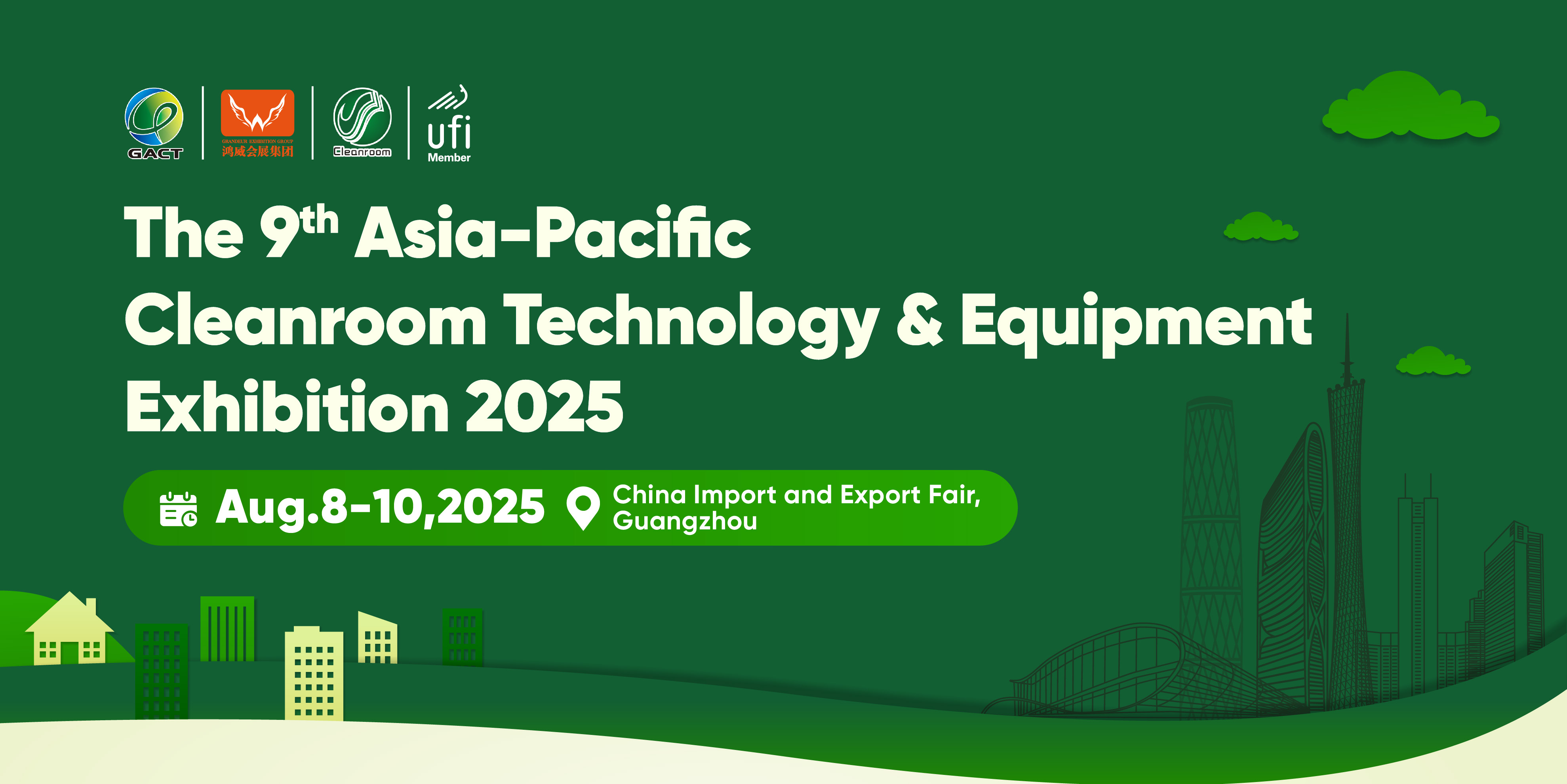
With the advancement of science and technology and the development of the economy, cleanroom technology is being increasingly applied across various sectors. Today, cleanroom requirements are becoming more stringent in industries such as electronics, pharmaceuticals, food, bioengineering, and healthcare. Cleanroom engineering is a multidisciplinary integration involving process engineering, architecture, decoration, water supply and drainage, air purification, HVAC systems, and automated control and measurement technologies. This article explores the application of automation instrumentation control and monitoring technology in cleanrooms.
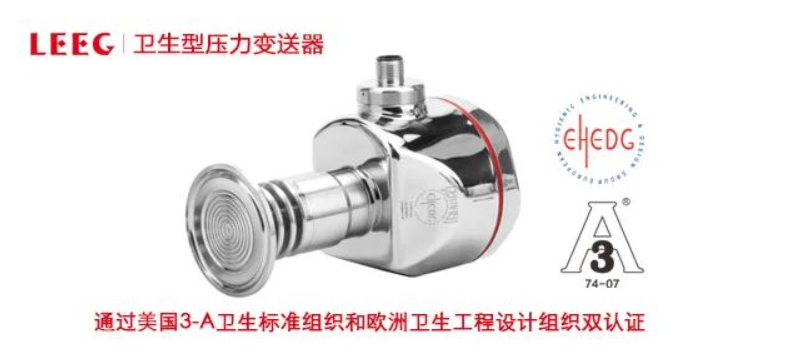
Modern cleanroom technology can be divided into three main categories: cleanroom design and construction, testing and inspection, and operation and management. Each of these categories incorporates the use of automation instrumentation and monitoring technology. Cleanroom engineering is a highly systematic process, which includes purification enclosure structures and clean HVAC systems. Whether the system is rationally designed and meets the required air cleanliness and process parameters depends largely on the level of instrumentation and automation. For HVAC systems, clean air handling units (AHUs) and air ducts are crucial. These components filter, heat or cool, humidify or dehumidify the air before delivering it to designated areas. However, whether the delivered air meets cleanliness standards and whether temperature and humidity satisfy production requirements depend on detection and control equipment.
1. Features of Cleanroom HVAC Systems
-
High-pressure and large-volume fans
-
High-precision temperature and humidity control
-
High-precision positive and negative differential pressure control
-
High-performance filtration systems
-
High-level variable air volume regulation
-
Excellent system stability and reliability
Given the specific features of cleanroom projects, control and measurement instruments must offer high reliability and stability. This ensures not only that the production process runs effectively but also promotes energy efficiency, cost reduction, and environmental protection. The following diagram illustrates the control principle in an air treatment system.
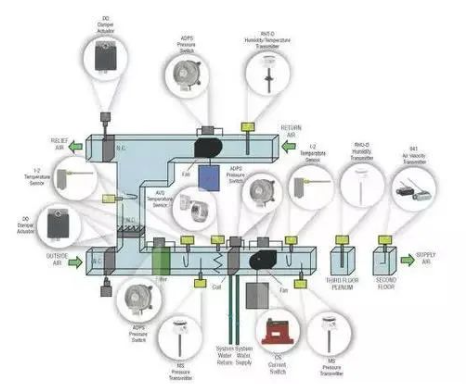
2. Differential Pressure Control in Cleanrooms
Cleanrooms must maintain a slight positive or negative pressure relative to surrounding spaces, as required by specific processes. This differential pressure can be controlled via supply vents, return vents, or pressure relief dampers.
Differential pressure control is crucial in clean HVAC systems. Only by maintaining reasonable airflow patterns through controlled pressure differences can both purification and process demands be met. For instance, clean production areas must be kept at a certain positive pressure to prevent unfiltered external air from entering, thereby maintaining cleanliness standards. Additionally, different areas within the cleanroom may require different pressure levels to create purification zones. GMP standards require that the pressure difference between cleanroom levels be no less than +5 Pa. In biosafety cleanrooms, maintaining stable and reliable negative pressure gradients is key to ensuring a protective barrier, as mandated by the Technical Code for the Construction of Biosafety Laboratories. Therefore, differential pressure control is of vital importance.
According to the Cleanroom Design Code, a room is considered a positive-pressure cleanroom if its internal pressure is higher than the outside, and a negative-pressure cleanroom if lower. Positive and negative pressure are relative terms—a room may be positive relative to the outdoors but negative relative to an adjacent room. The code specifies that the pressure difference between clean and non-clean areas must be ≥5 Pa, and between clean areas and the outdoors ≥10 Pa. Cleanroom corridors must maintain at least 30 Pa positive pressure relative to non-clean areas. This pressure difference is typically established by ensuring that the air supply volume exceeds that of return, exhaust, and leakage.
3. Cleanliness Control in Cleanrooms
Cleanliness control is achieved primarily through the use of filters and maintaining specific air exchange rates. Filter performance and clogging over time can impact air cleanliness, which is why the condition of the filters must be monitored. Additionally, fan operation status and duct pressures must also be observed. The image below illustrates typical products used for differential pressure monitoring and control.
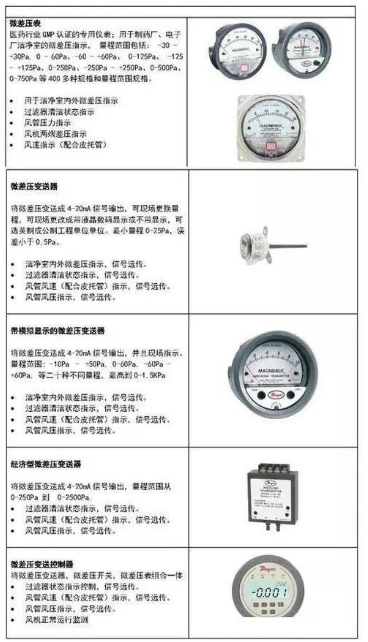
4. Air Volume Control in Cleanrooms
The supply air volume in cleanrooms is determined by the required cleanliness level. However, this volume is also affected by factors such as particulate generation and pressure differences, potentially increasing energy consumption and operating costs. By using variable frequency drives (VFDs) in combination with sensors and controllers, the exhaust air volume can be adjusted according to process needs, which in turn adjusts the supply air volume. This avoids unnecessary fan operation during non-production periods, saving electricity. VFDs also allow fan speeds to be adjusted based on actual air volume requirements, significantly reducing energy consumption. The following diagram shows the basic principle of air volume regulation.
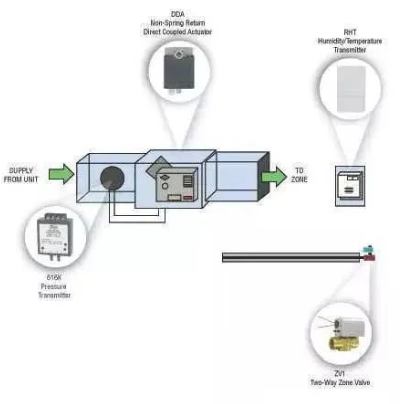
5. Other Typical Automation Instruments
5.1 Temperature and Humidity Control Instruments:
The image below showcases representative instruments for temperature and humidity monitoring and control.
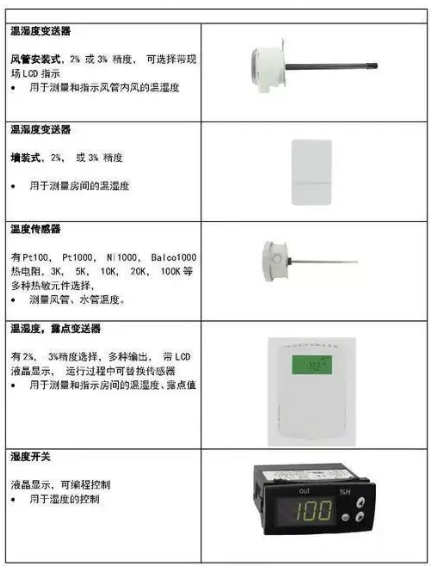
5.2 Airflow and Fan Control Instruments:
The image illustrates typical instruments for measuring airflow and controlling fans.
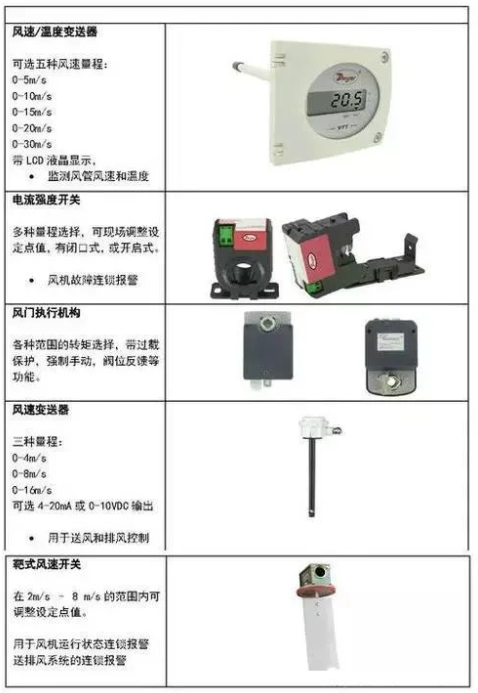
5.3 Hot and Chilled Water System Control Instruments:
In central HVAC systems, hot and chilled water piping systems and equipment are common and require appropriate automation control devices. The image shows the system diagram and typical instruments used in such systems.
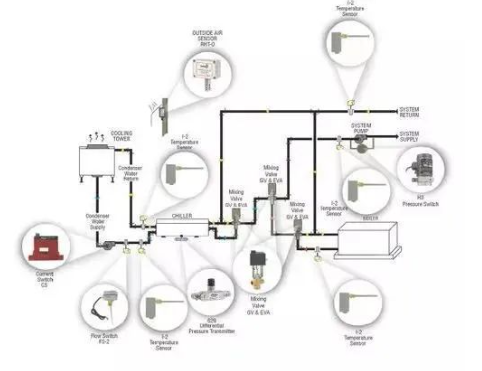
These devices form the basic automation control system of cleanroom HVAC systems. Depending on project requirements, either analog-based or computer-based control systems can be implemented.
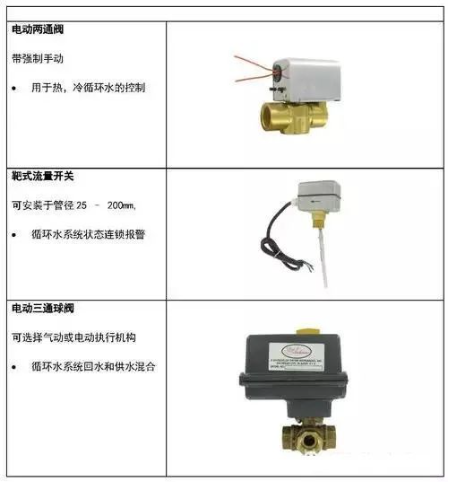
5.4 Instruments for Commissioning and Maintenance During Construction and Normal Operation
-
5.4.1 Airflow and Air Velocity Monitoring:
Airflow measurements are fundamental to all other tests and help verify system design.
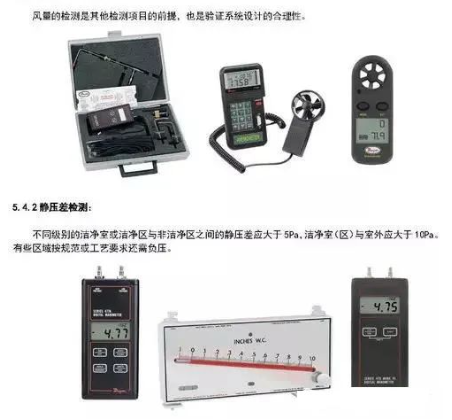
-
5.4.3 Cleanliness Testing:
Each cleanroom (or zone) must be sampled at least three times, using instruments that match the required particle size ranges for the specific cleanliness level. -
5.4.4 Portable Temperature and Humidity Measurement:
Measurements should comply with the Cleanroom Construction and Acceptance Code.
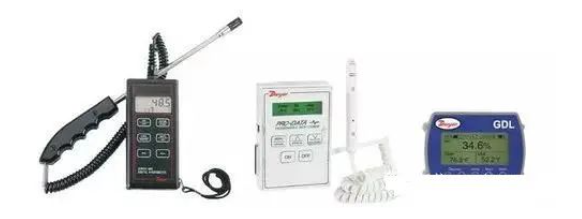
-
5.4.5 Illumination Testing:
Testing should also follow the aforementioned acceptance code. -
5.4.6 Noise Testing:
Sound level meters with octave band analyzers are used. Testing should be conducted at night with only the HVAC system running and all other equipment shut off. -
5.4.7 Microbial Testing:
Currently, floating bacteria and settling bacteria tests are commonly used. These involve a three-step process: collection, incubation, and counting.
Source: Content adapted from online resources, compiled and published by the “Pharmaceutical Industry” platform. All rights belong to the original authors. Data and visuals are for reference only and do not represent the position of this platform. Please contact us for removal in case of infringement.


